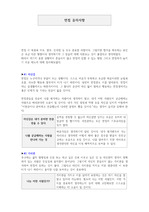THE RISK PERCEPTION ATTITUDE FRAMEWORK:CONSUMER INVOLVEMENT, PERCEPTIONS OF RISK, AND RESPONSES TO FOOD LABELS
* 본 문서는 배포용으로 복사 및 편집이 불가합니다.
서지정보
ㆍ발행기관 : 글로벌지식마케팅경영학회(GFMC)
ㆍ수록지정보 : Global Marketing Conference
ㆍ저자명 : Sujung Nam, Juran Kim, Kyung-Tae Gong
ㆍ저자명 : Sujung Nam, Juran Kim, Kyung-Tae Gong
영어 초록
Introduction Consumers throughout the world, including Asia, are showing increased concerns about food safety. Public policy, industry, and academic researchers are turning increased attention to the effects of food labeling requirements. General food labels provide information about serving size, servings per container, total calories per serving, calories from fat, and minimum daily nutritional value. Consumers must then use the food labeling information to make individual dietary choices. Thus it is appropriate for researchers to ask how consumers formulate product choices and evaluations according to food labeling information including calorie counts and standardized nutritional information (Ford et al. 1996; Keller et al. 1997; Roe, Levy, & Derby 1999). Long-term strategies are critically needed to find ways to protect public health and to assure food safety. Health practitioners and governmental regulators have increased their efforts to address the growing problem by sponsoring programs for food safety and by requiring nutritional labeling. In answer to the need for further research in food consumption behavior (RFC), this study was conducted to investigate how manufacturers might use consumers’ perceptions of risks and involvement for planning the most effective food labeling. Theoretical Framework To find ways to promote general and social marketing healthful consumer use of food labels (Lefebvre, 1988; McDermott, 2000), this study utilizes consumer segmentation techniques in which consumers are categorized according to psychological and demographic profiles (Slater, Kelly, & Thackeray, 2006). That is, they are segmented based on essential homogeneous responses (Forthofer, 2000; Kotler, 1971) and demographic characteristics, including age, gender, income and social class, although demographics may be less effective than psychological differences for predicting responses to health promotions (Lefebvre, 1988; Slater, 1991). The psychographics approach to consumer segmentation, derived from marketing techniques, selects variables that predict health behaviors; that is, consumers are segmented according to how they process communication channel properties and message features (Rimal & Adkins, 2003). By focusing on consumer segmentation we elucidate how consumers react to food labeling designed to promote health and food safety. Consumer segmentation should help us understand why consumers might reject risky unhealthful behaviors and adopt protective healthful behaviors (Slater, 2006). The risk perception attitude framework (Garretson & Burton, 2000; Rimal & Real 2003; Turner, Rimal, Morrison &, Kim, 2006) is a theoretical perspective for segmenting consumers based on their perceptions of risk and their beliefs about personal efficacy. According to the risk perception attitude framework, risk perceptions are usually insufficient to motivate behavior, but when high risk perceptions are coupled with strong efficacy beliefs, people are more motivated to engage in self-protective behaviors. Social cognitive theory and the extended parallel process model also support the importance of efficacy beliefs as moderating risk perception effects on self-protective behavior (Bandura 1986; Witte 1994). Using the risk perception attitude framework for purposes of this study, consumers are classified into four groups according to their risk perception and self-efficacy as indicated by their involvement in health concerns. 1) The "indifference" group comprises study participants who have low risk perceptions and low involvement; they believe they face few risks, lack control of their actions, and are thus not motivated to undertake protective behaviors. 2) The "responsive" group comprises study participants who have high risk perceptions and high involvement and thus are motivated to undertake extensive self-protective behaviors. 3) The "proactive" group comprises participants who have low risk perception but high involvement; they believe strongly in their personal abilities to take control, but perceive low risk and are thus not motivated to engage in self-protective behaviors. 4) The "avoidance" group comprises study participants who have high risk perceptions and low involvement; they are concerned about the need to counter risks but lack the self-efficacy and involvement to follow recommendations. Research Questions To examine the risk perception attitude framework in the context of research on food consumption behavior (RFC), three central research questions are posed: RQ1: How are consumers classified according to their level of perceived risk and involvement? RQ2: Do different consumer types show different attitudes toward paying higher prices for safer food and toward paying attention to food labels? RQ3: What factors influence consumer classifications? Methods Data for this study came from research on food consumption behavior (RFC) conducted by Korea Rural Economic Institute (KREI) in 2014. In 2013, the KREI began gathering data regarding food consumption behavior to help the food industry develop more efficient use of food resources. RFC data are appropriate because they include data about various consumption patterns regarding food lifestyles, purchases, and food safety. Specifically, RFC for this study, we gathered data for a stratified sampling of 6,311 consumers, 19 to 75-years-old, living in 16 metropolitan city-regions in South Korea. Table 1 shows general features of the research participants. Among the respondents, 44.2% were men; 55.8% were women; 10.7% were 19 to 25-years-old; 37.6% were high school graduates; 46.9% had lower than middle school graduation levels, 21.9% were college graduates, 2.3% had post-graduate levels, 1.1% were uneducated; 36.5% had average monthly family incomes of 200~399; 1.3% had the highest rate of 1000 and more; 1.0% had low to moderate interest in health; 42.8% reported that they bought food two or three times weekly; 0.7% reported buying food once a month. Respondents reported an average 3.93 regarding risk perceptions for food safety. Their reported average level of involvement was 3.32; average of intention to pay higher prices for safe food was 3.37, and their average likelihood of checking food labels was 3.15. Measurement To score education levels, the uneducated group = 1, less than middle school = 2, high school graduates = 3, college graduates = 4, and postgraduates = 5. A five-point Likert-type scale was used to measure participants’ interest in their health (1 = complete indifference to 5 = very much interested). Also a five-point Likert scale was used to measure perceived risk for twelve items related to food safety: foreign substances, pesticide residue, use of antibiotics in livestock and fish, natural toxicity, food additives, heavy metals, endocrine disruptors, bacterial contamination, livestock disease, GMO, irradiation, packing hazards, and allergens (1 = not concerned at all to 5 = very concerned). Involvement was measured for three questions regarding food origin, food materials, and eco-friendly products (1 = not concerned at all to 5 = very concerned). Intentions to pay higher prices for safe food and to check food labels were measured from 1 = not at all to 5 = very positive. Results Four consumer groups were classified according to their level of perceived risk and involvement. We followed previous RPA model studies (e.g., Sullivan et al., 2008; Jo & Yoo, 2011) and classified groups based on median perceived risk and involvement: (≥4.00) for high perceived risk, (<4.00) for low perceived risk, (≥3.333) for high involvement, and (< 3.33) for low involvement. The responsive group had high perceived risk and high involvement; the proactive group had low perceived risk and high involvement; the avoidance group had high perceived risk and low involvement; and the indifference group had low perceived risk and low involvement. Additionally, ANOVA with post-hoc Tukey test was conducted to examine the average difference among the four groups regarding their intentions to pay higher prices for safe food and to check food labels. Multinomial logit regression was performed to discover the factors that influence classification of consumer types. Classification of consumer types according to perceived risk and involvement Table 1 shows the consumer classifications according to the level of perceived risk and involvement: 1,198 participants, 21.8%, were in the indifference group with low perceived risk and low involvement; 1,254 participants, 22.8%, were in the proactive group with low perceived risk and high involvement; 1,125 participants, 20.5%, were in the avoidance group with high perceived risk and low involvement; 1,924 participants, 35.5%, were in the responsive group with high perceived risk and high involvement. Among the four groups, the responsive group had a statistically significant relatively high ratio: χ2 value for group classification was 79.695 (p <.001). Consumer classification differences in purchase intentions to pay higher prices for safe food and to check food labels Table 2 shows differences in intentions to pay higher prices for safe food and to check food labels. The proactive group showed the highest average intentions to pay higher prices for safe food at 3.52, followed by the responsive group at 3.51, the avoidance group at 3.25, and the indifference group at 3.16. The differences among the groups were statistically significant. A Tukey post-analysis showed that the high involvement group, in contrast with the low involvement group, showed higher average intentions to pay higher prices for safe food. Among the low involvement groups, those with high perceived risk had higher average intentions than those with low perceived risk. The responsive group showed the highest average intentions to check food labels at 3.44, followed by the proactive group at 3.43, the avoidance group at 2.74, and the indifference group at 2.27. The differences among the groups were statistically significant. A Tukey post-analysis showed that high involvement groups, in contrast with low involvement groups, showed higher average intentions to check food labels, but no difference was found according to the level of perceived risk. Influential factors of consumer segmentations Table 3 shows the results of examining the factors of gender, age, education, monthly average family income, and interest in health that are typical in consumer segments. Comparing all groups with the responsive group, the indifference group was most likely to comprise young women who had lower educational levels, lower monthly income, and less interest in health. The proactive group was most likely to be made up of men. The avoidance group was most likely to be made of young men who had lower educational levels, lower monthly incomes, and less interest in health. Discussion This study is an investigation of the theoretical framework of risk perception and involvement according to indifference, proactivity, responsiveness, or avoidance consumer segments. The study centrally indicates that the four risk perception–involvement framework groups differ in their perceptions of risk and the extent of their involvement. By revealing the importance of high involvement as a fruitful intervention strategy, the results suggest practical implications for public policymakers and marketers who strive to devise appropriate food labeling. Social cognitive theory has long stressed the importance of enhancing personal involvement (Bandura 1986). That insight can be applied to the risk perception attitude framework for identifying particular audiences who will respond to involvement-enhancing messages. Our findings suggest that a useful strategy in promoting change is to recognize that consumers will react differently according to their tendencies toward indifference, proactivity, responsiveness, or avoidance.참고 자료
없음"Global Marketing Conference"의 다른 논문
 THE ROLES OF GREEN PACKAGING IN UGLY FOOD PURCHASE INTE..22페이지
THE ROLES OF GREEN PACKAGING IN UGLY FOOD PURCHASE INTE..22페이지 THE IMPACT OF INDUCED AWE ON ETHICAL TOURIST BEHAVIORS5페이지
THE IMPACT OF INDUCED AWE ON ETHICAL TOURIST BEHAVIORS5페이지 A BIBLIOMETRIC ANALYSIS OF SPIRITUAL TOURISM RESEARCH15페이지
A BIBLIOMETRIC ANALYSIS OF SPIRITUAL TOURISM RESEARCH15페이지 SOCIAL NETWORK ANALYSIS AND RESPONSE TIME TESTING: CONS..11페이지
SOCIAL NETWORK ANALYSIS AND RESPONSE TIME TESTING: CONS..11페이지 THE EFFECTS OF PARA-SOCIAL INTERACTION ON ONLINE CELEBR..3페이지
THE EFFECTS OF PARA-SOCIAL INTERACTION ON ONLINE CELEBR..3페이지 THE INFLUENCE OF OPINION LEADERS ON DAILY DEALS USER’S ..3페이지
THE INFLUENCE OF OPINION LEADERS ON DAILY DEALS USER’S ..3페이지 HOW IMMERSIVE RETAILING AFFECTS CONSUMERS’ URGE TO BUY:..6페이지
HOW IMMERSIVE RETAILING AFFECTS CONSUMERS’ URGE TO BUY:..6페이지 KEY TO SUPERSTARDOM IN A GLOBALISED MARKET: THE ROLE OF..6페이지
KEY TO SUPERSTARDOM IN A GLOBALISED MARKET: THE ROLE OF..6페이지 A POST-PANDEMIC LOOK AT TOURISTS’ PERCEIVED COOLNESS OF..4페이지
A POST-PANDEMIC LOOK AT TOURISTS’ PERCEIVED COOLNESS OF..4페이지 EXTRACTING OFFLINE RETAIL SHOPPING PATTERNS: OLLABORATI..5페이지
EXTRACTING OFFLINE RETAIL SHOPPING PATTERNS: OLLABORATI..5페이지

























